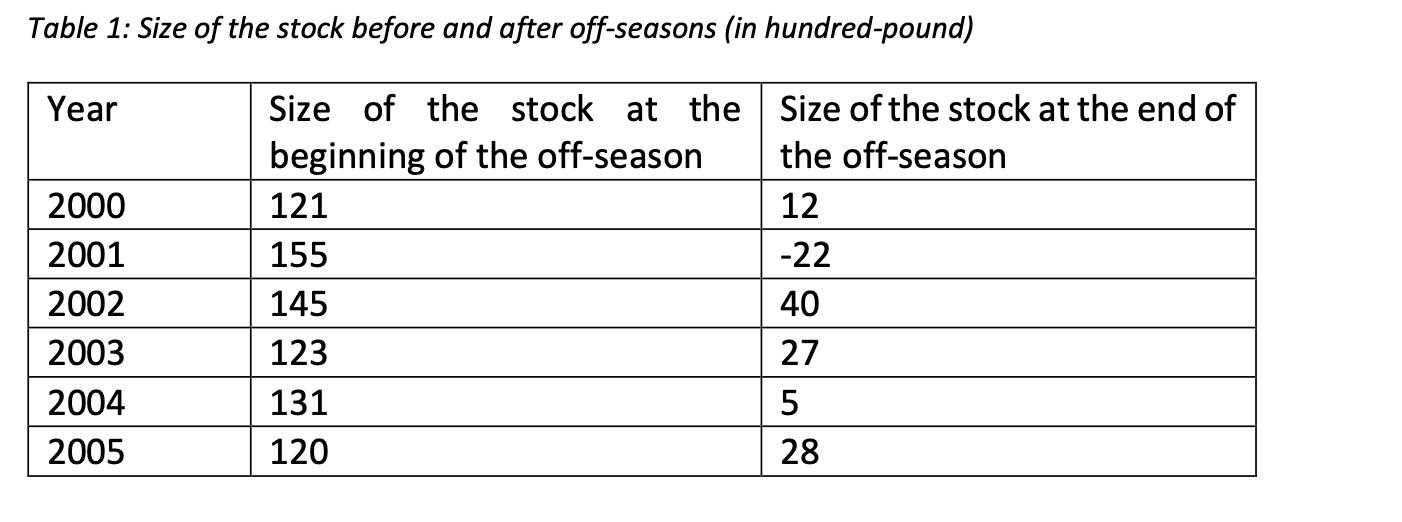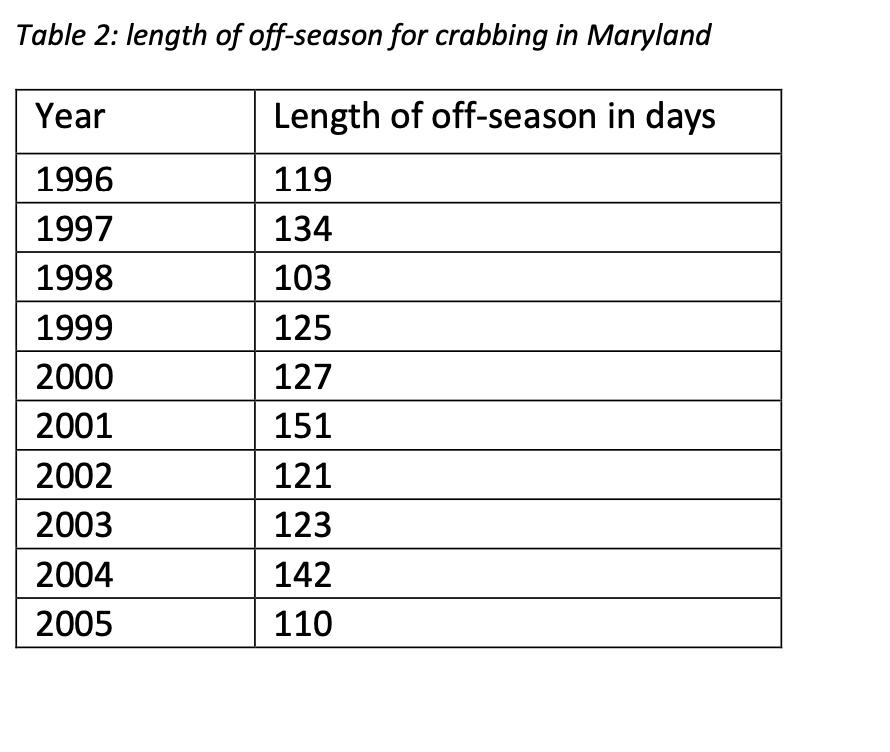Question
Jerrys Seafood is a chain of restaurants located across Maryland. They serve all kinds of seafood including crab-made dishes. Maryland is a famous place for
Jerry’s Seafood is a chain of restaurants located across Maryland. They serve all kinds of seafood including crab-made dishes. Maryland is a famous place for crab fishing which is advantageous to Jerry’s Seafood restaurants due to their proximity to the natural habitat of crabs. Since Jerry’s Seafood restaurants are very famous with high sales level, they hire fishers during the crabbing season to directly supply the restaurants. Crabbing season is approximately 8 consecutive months followed by an approximately 4- month off-season. During the off-season, crabbing is not allowed due to environmental protection laws and weather-related reasons. During the open season, crabs are moved directly to the restaurants on a daily basis to use them fresh. The proximity of restaurants to the ocean made this process extremely efficient during the open season.
The problem with this form of supply begins when the crabbing season ends. To supply the restaurants during the off-season, an inventory of crabs – The Crab Stock – has to be made prior to the off-season and has to last for the entire off-season. Every year it seems there are extended and heated discussions of how big The Crab Stock should be. Matt, the sales manager of the Jerry’s Seafood chain, is sitting thinking through what his position would be at tomorrow’s meeting when this would again be the topic of discussion.
Matt is holding this year’s meeting in his office at the administrative building. The other participants are Jim, the inventory manager, and Jacqueline, the treasurer. Each participant has the information provided in Table 1. This indicates the size of The Crab Stock at the beginning of the off-season in each of the last six years and the size of the stock, if any, at the end of the off-season.

Matt begins the discussion:
I am sure you both remember the terrible problem we had in 2001 when we exhausted The Crab Stock and had to outsource locally to keep the restaurants servings crab dishes. The same factors which caused us to run out- high demand and a long freeze, affected a number of restaurants the same way. With that demand our outside suppliers were able to charge us an effective price of about twice what it costs to fish and transport from the ocean. The point is this, the increased cost of outsourced crabs wiped out all of the profit contribution that year. I hope we can all agree at the outset that we will build The Stock big enough this year that we won’t have the repetition of that mess.
Jim looks at Matt and says:
We all understand the problem and in fact sympathize with you on it Matt, but remember there is another side to this story too. Two thousand one was really bad luck. Not only we pick up much more business than we had forecast but it was a significantly longer off-season period. It is not likely we’ll run in into that situation again. It is certainly not logical to do all of our planning to protect against every extreme contingency. Don’t forget that The Crab Stock really costs big money and we’re not the old Cash Cow we used to be.
Matt continues: I’m not quite sure what you’re driving at Jim, surely the costs of stocking an adequate amount of crab are very small. After all, we will use any leftover during the following crabbing season.
Jim broke in and said: That is not really the point Matt. If we have too much crab stocked, it means we have paid the fishers to fish about 4 months earlier than we needed to. It may not sound a big deal to you but our internal cost of funds (holding cost factor) is 25% per year, so tying up money in The Crab Stock gets expensive. Jacqueline, could you please what kind of fishing costs are we looking at now?
Jacqueline responded: Well, the variable fishing cost is $33 per hundred-pound crab. In addition, the variable transportation cost when crabs go directly to restaurants runs about $10 per hundred-pound. Of course, when you have to pile the crabs and then send them later to the restaurants during the off-season, it adds $4 per hundred pound to the cost (handling cost).
Matt adds: The thing that bothers me is that how much crab I will need in The Crab Stock depends not only on my consumption rate but on how long the off-season will last. When I looked back in our files, I was able to piece together the length of off-season in each of the past 10 years (Table 2). Jim, it’s all very well for you to come here and talk about internal cost of funds but come back later when we are out of crab and we need to pay $70 per hundred-pound (delivered to restaurants) to outside crab suppliers during the off-season. And that will be real dollars not funny money.

This case study deals with the newsvendor problem.
The key question is: How much crab should be piled up before the off-season? To answer this question you will need the following information:
Average demand
Std. deviation of demand
Cost of under-stocking
Cost of over-stocking
You can extract this information from the case (although it may not be obvious)
compute the optimal pile size.
Table 1: Size of the stock before and after off-seasons (in hundred-pound) Size of the stock at the beginning of the off-season Year 2000 2001 2002 2003 2004 2005 121 155 145 123 131 120 Size of the stock at the end of the off-season 12 -22 40 27 5 28
Step by Step Solution
3.40 Rating (156 Votes )
There are 3 Steps involved in it
Step: 1
The optimal pile size for The Crab Stock is calculated using the newsvendor formula Optimal pile siz...
Get Instant Access to Expert-Tailored Solutions
See step-by-step solutions with expert insights and AI powered tools for academic success
Step: 2

Step: 3

Ace Your Homework with AI
Get the answers you need in no time with our AI-driven, step-by-step assistance
Get Started


